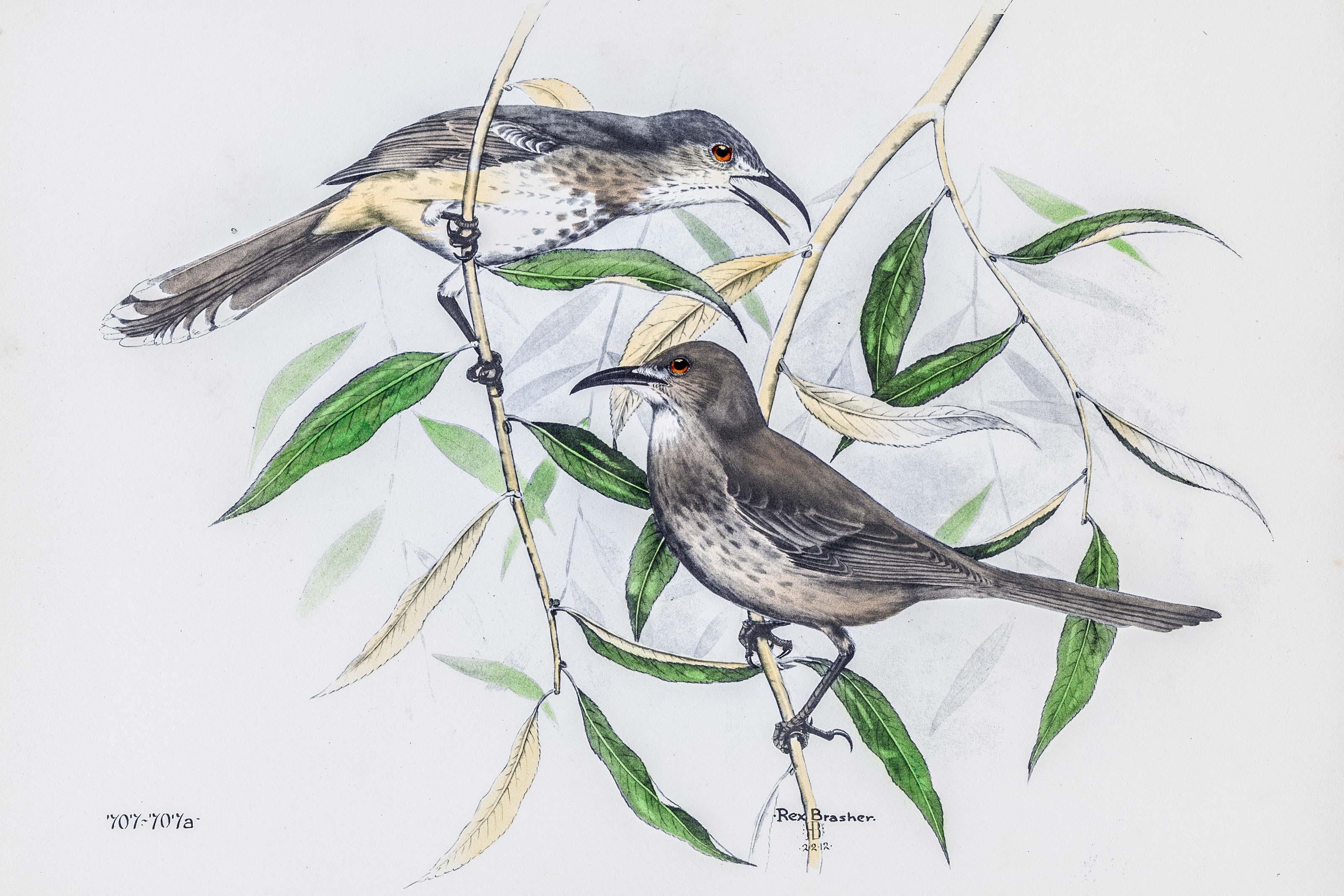
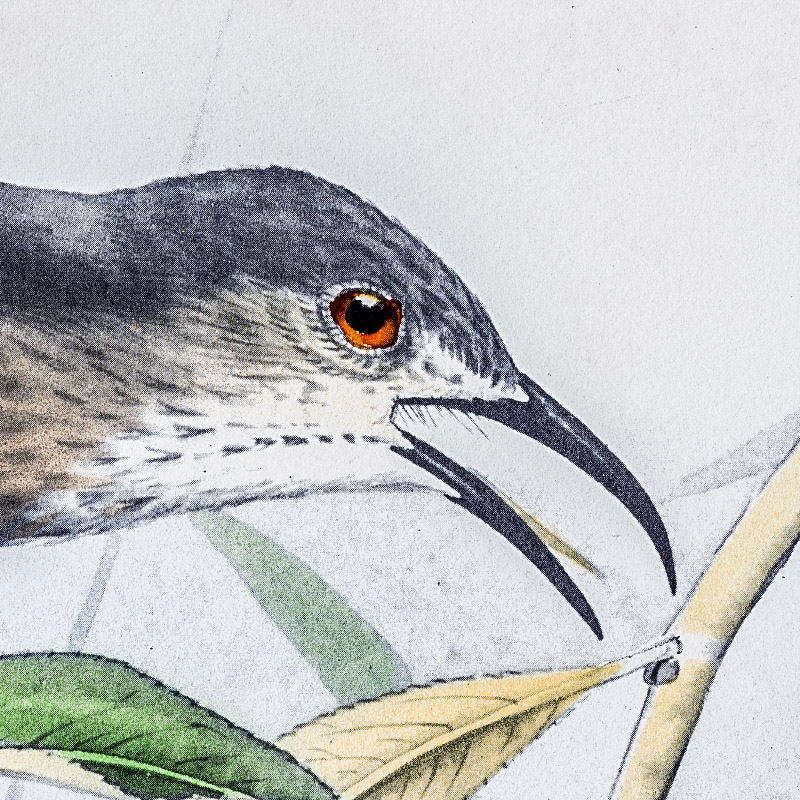
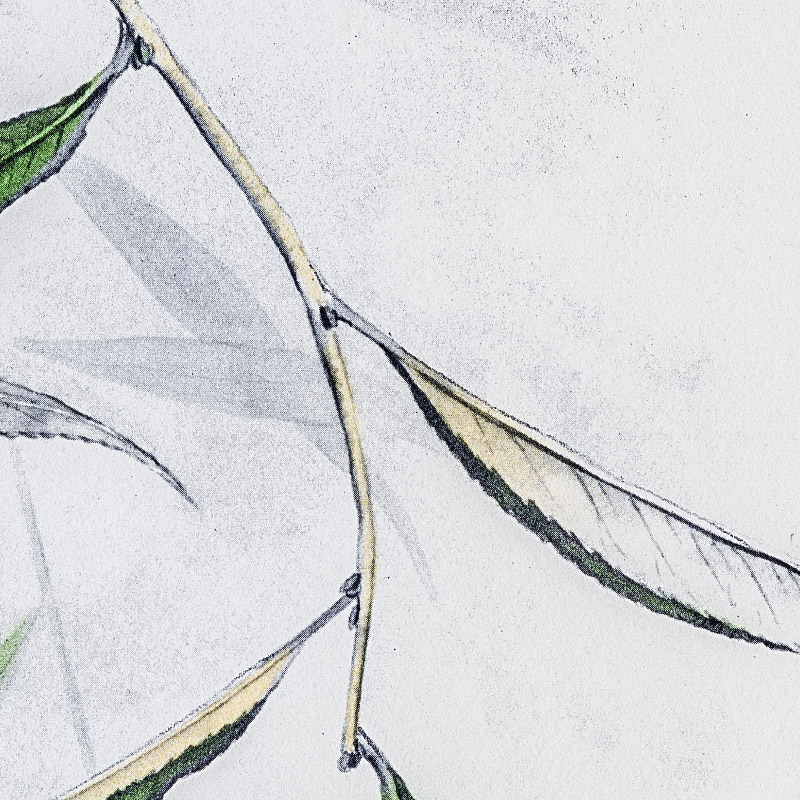
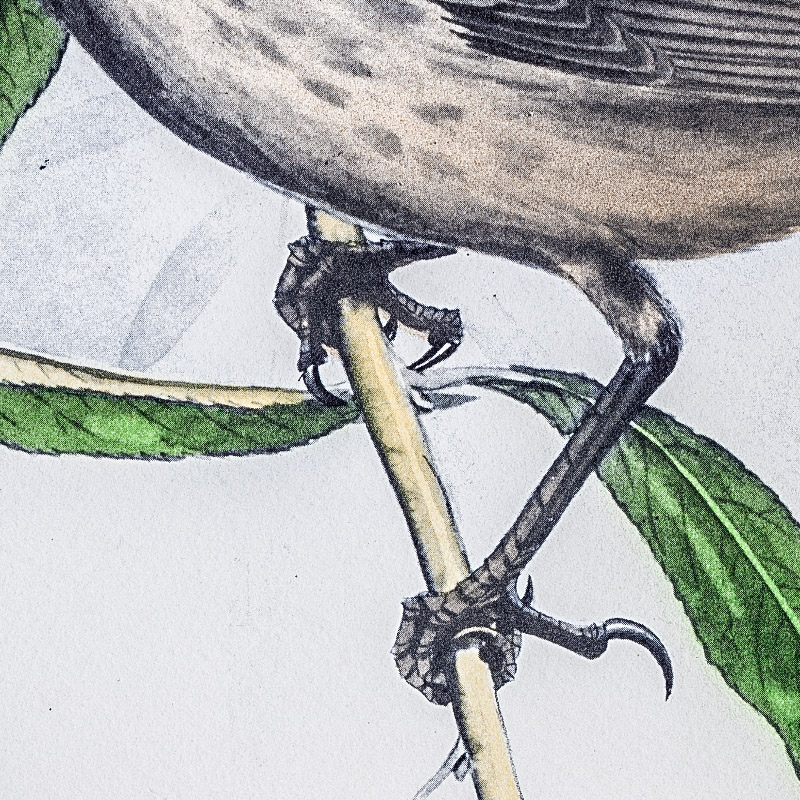

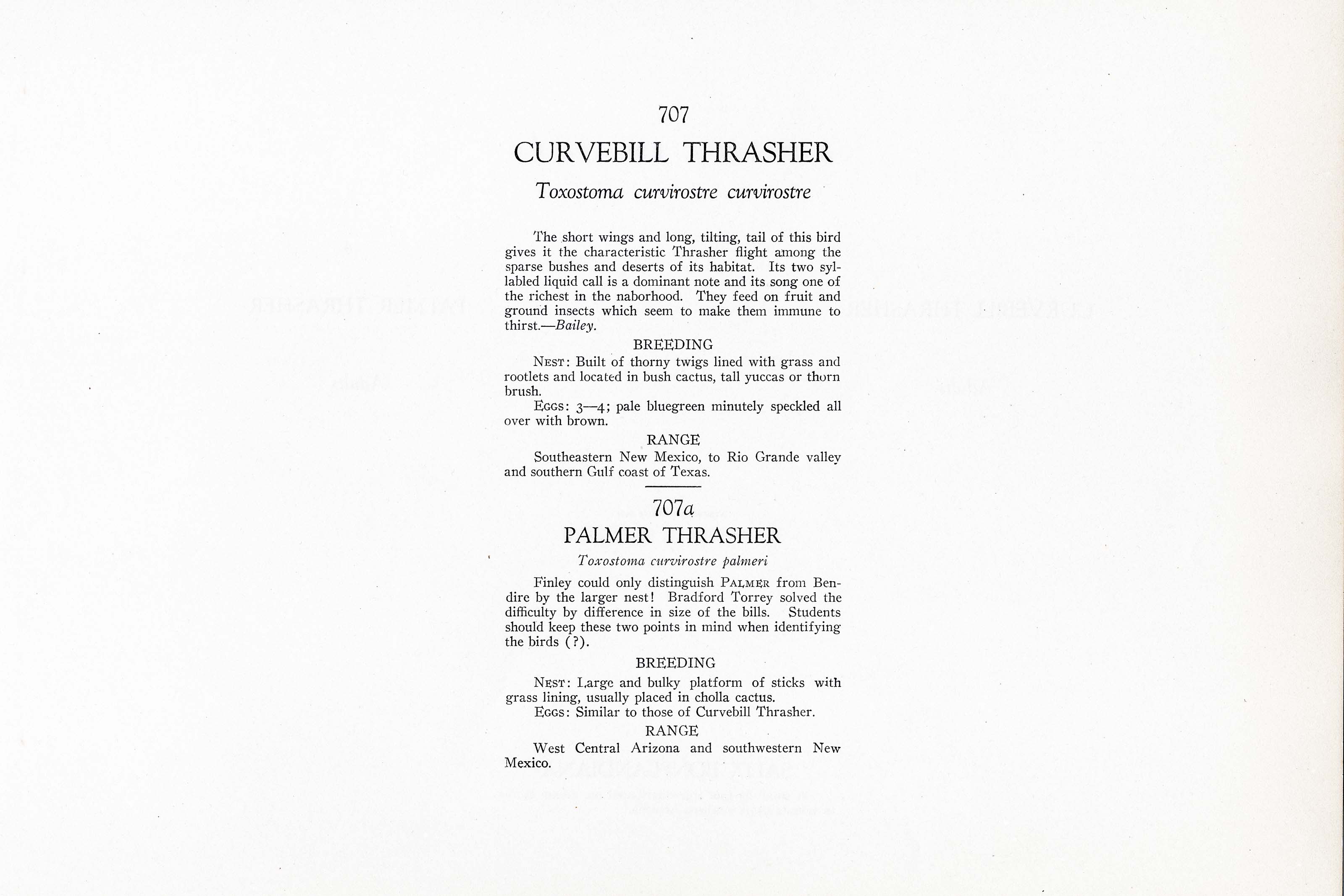

1912
1930
11
707-707a
A team of dedicated board members, volunteers, and student interns has published every page in Volume 9. This volume includes 360 images of paintings and lyrical descriptions of birds, now available online for everyone to enjoy anywhere in the world. This is a monumental task. Each volume requires approximately 400 hours to photograph, edit, transcribe, catalog, and publish online. We need your support to complete this work.
If you're tech-savvy, have a good eye, are meticulous with details, and love structured data, please consider volunteering by emailing us at hello@rexbrasher.org.
We encourage all bird lovers and supporters to consider a monetary donation to support our mission to make Rex's work available for everyone. You can provide a one-time or recurring donation online.
The short wings and long, tilting, tail of this bird gives it the characteristic Thrasher flight among the sparse bushes and deserts of its habitat. Its two syllabled liquid call is a dominant note and its song one of the richest in the naborhood. They feed on fruit and ground insects which seem to make them immune to thirst. —Bailey.
NEST: Built of thorny twigs lined with grass and rootlets and located in bush cactus, tall yuccas or thorn brush.
EGGS: 3–4; pale bluegreen minutely speckled all over with brown.
Southeastern New Mexico, to Rio Grande valley and southern Gulf coast of Texas.
Finley could only distinguish PALMER from Bendire by the larger nest! Bradford Torrey solved the difficulty by difference in size of the bills. Students should keep these two points in mind when identifying the birds (?).
NEST: Large and bulky platform of sticks with grass lining, usually placed in cholla cactus.
EGGS: Similar to those of Curvebill Thrasher.
West Central Arizona and southwestern New Mexico.
A small 25-foot tree distributed on stream banks in mountains of southern Arizona.